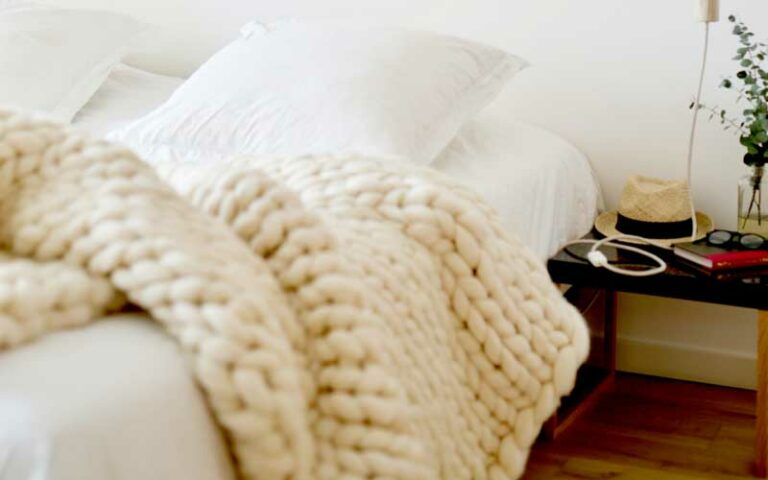Whether you want to make your own weighted blanket or buy an already established brand product, you will always have one question in mind. What are the best weighted blanket fillers? The filling is utterly important, so you have to be careful what you are going to choose, as you will spend a lot of time sleeping with it.
There are various things to consider when it comes down to filler, such as price, availability, toxicity etc. All of this can sound overwhelming, but fear not, as we did the hard work for you!
So let’s take a look at the most commonly used weighted blanket fillers, so you can find the most suitable choice.
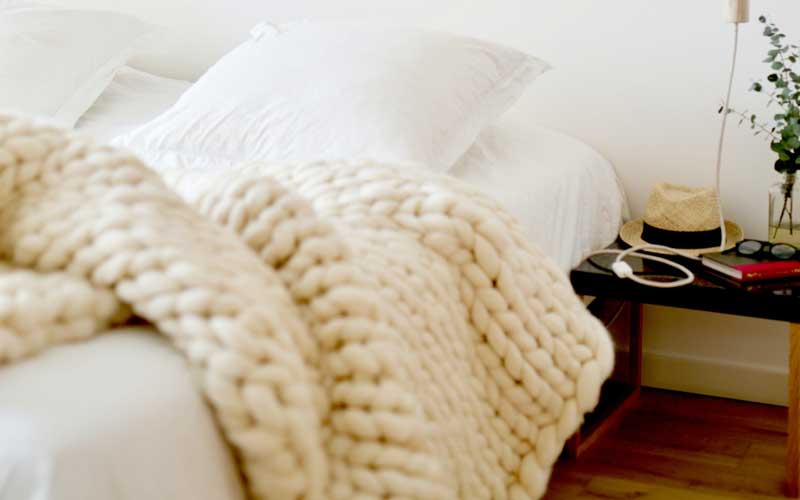
What is the best filling for weighted blankets?
If you’re familiar with weighted blankets, you’ll know they contain extra filling in order to be heavier than a regular blanket. The additional weight provides extra sensory input to the user’s body, which many individuals find decreases anxiety and improves sleep quality. Let’s take a closer look at the eight most common fillings:
Micro glass beads
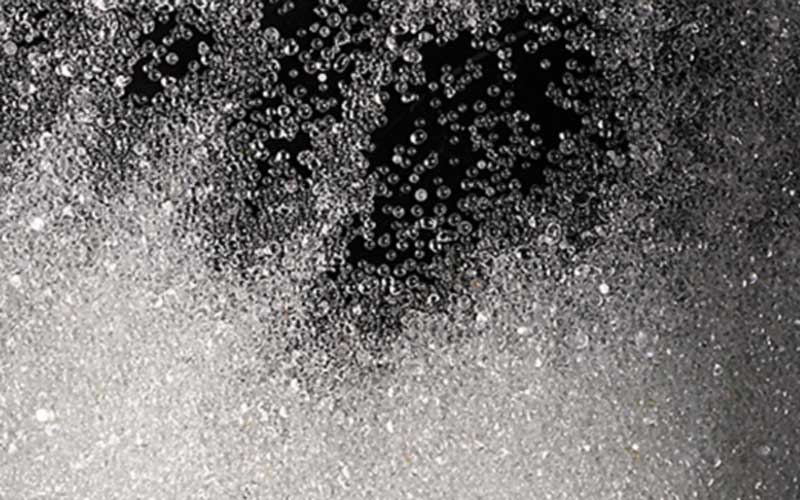
Micro glass beads are hands down the most popular and common weighted filler. Glass pellets are considered a high-quality, luxurious material due to their smooth edges and consistent shape.
Glass beads are usually much smaller than pebble-like plastic poly pellets, traditionally used as weighted blanket fillings. They are considered a little more expensive than plastic fillings, but glass beads are much heavier, meaning you need less of them.
Due to their small size and weight, the glass dots sit very densely inside a blanket, allowing it to lie more smoothly on the body than covers filled with a bulkier filling. Due to their density, many people also consider them less ‘clumpy’.
Glass options are very popular, which means you might find some cheaper products containing lead. However, you should try and avoid them and search for hypoallergenic, non-toxic glass beads.
Overall, glass beads are highly durable, hypoallergenic and odourless, which often makes them the best option for highly sensitive people.
Plastic poly pellets
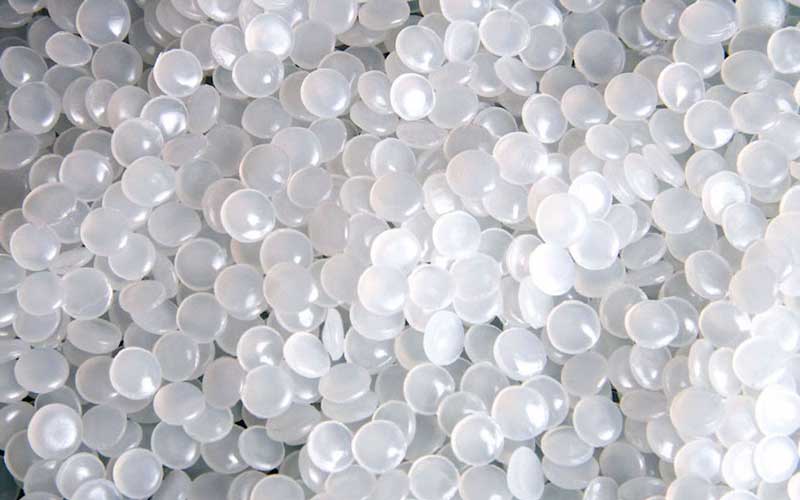
Plastic poly pellets used to be the most traditional filling before glass beads showed up on the market. Usually, they are made of polypropylene plastic, which is a type 5 plastic and is generally considered safe and toxic-free.
Understand that if you’re highly sensitive or sensory avoiding, poly pellets might be a little overstimulating due to their bulkier size, and they might rustle a bit when they move around in bed.
That’s why we recommend looking for options with a thicker casing/padding. On the flip side, if you are searching for something more tactile, poly pellets are the way to go.
Steel shot beads
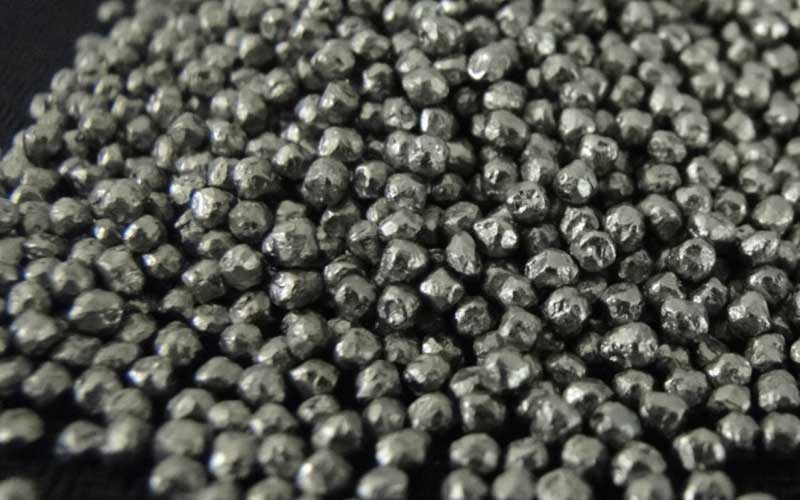
Next, we have another quite popular filling, often used in DIY weighted blankets, and that’s steel shot beads.
Something to keep in mind with steel balls is that they’re heavy, which can feel lumpy on the body and cause a rustling sound when they move underneath.
The set weight also means they’re more inclined to fall into the corners of the blanket’s ‘pockets’, leading to uneven weight distribution. On a more positive side, steel-cut beads are washable, so you won’t have to worry about your sleep hygiene.
River stones and pebbles

Whilst aquarium gravel (smooth pebbles) might not seem like the most obvious filling for a heavy blanket, it is a popular choice with homemade blankets.
River pebbles are heavier than other fillings, so you’ll need fewer of them, which makes them another inexpensive option.
Generally, gravel has sharper edges than other fillers, which makes it harder on the fabric compared to other smoother fillings. Beach pebbles or river stones will also feel lumpier on your body. Plus, they aren’t the best at containing heat, giving them a cooler feel in comparison to other products.
Nano-ceramic beads
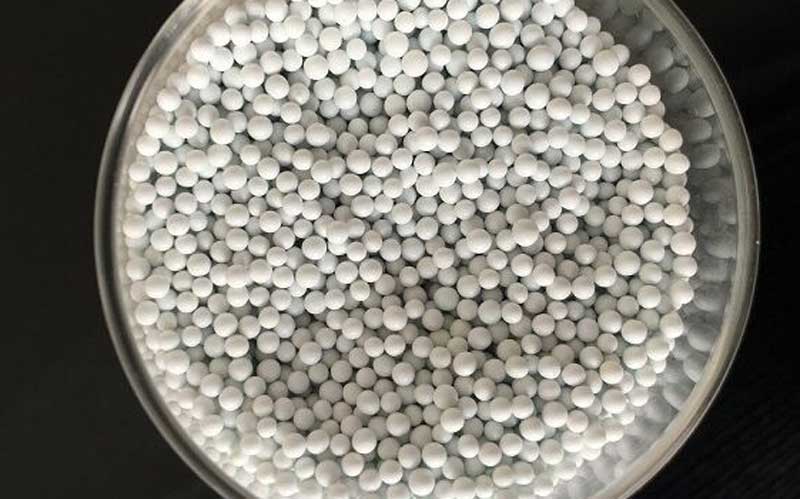
Next on our list, we have a filling not nearly as common as its glass counterparts, and that’s the ceramic bead blanket. Occasionally you might find nano ceramic bead fillers in commercially made common blankets.
This filler type sometimes claims the advanced nanoparticle ‘technology’ without explaining what it means. So let’s try and explain it! From a buyer’s point of view, ceramic nanoparticles are made from tiny particles of ceramics that have been mixed within a solution and gel to form the nanoparticle.
These nanoparticles contain a high percentage of air, meaning they are very light but strong and flexible.
This durable material offers balanced weight distribution while providing you with soothing comfort.
Sand

One of the most popular fillers used in homemade weighted blankets is grains of sand.
Sand is a relatively inexpensive material that is easy to buy. White sand can be an inexpensive filler for a heavy blanket, but it shouldn’t be washed very often, if at all. That’s because it dries very slow and will most likely end up with big clumps of sand and uneven weight distribution.
Another disadvantage that comes with this material is that its particles are extremely fine, meaning it can be hard to find a fabric that can contain it without any leakage.
Your best bet will be to first contain the sand in plastic pouches before inserting and stitching them inside the cover’s pockets.
Rice, beans, and other grains

Many people use food products as filling when DIY’ing a blanket. The most common choices include rice, dried beans, corn, barley and other grains.
Edible food filling is a low-cost option that is likely to work. The question is how effective it will actually be. Generally speaking, food items such as rice are organic materials that are porous, making them unsuitable for washing. They also don’t dry well, which encourages bacteria and mould.
Some individuals will say that rice has an indefinite shelf, but that’s when it’s kept in an airtight container, not when exposed to air and constant washings. For example, brown rice can go rancid and attract insects, such as rice weevils.
Crystals

Finally, we have quartz crystals, one of the many weighted blanket fillers. They aren’t the most obvious choice, but they are still an option to consider, especially if you’re drawn to the power of natural healing.
However, know that you will need a large number of small pieces if you plan to use them as a filler for your homemade pressure blanket.
A lot of individuals think that crystals such as quartz hold vibrational frequencies, which can help the body to heal naturally. So if you are a fan of natural healing that comes with the therapeutic benefits of deep touch pressure, this is the way to go.
Bottom line
To sum it up, micro glass beads and plastic poly pellets are the most common weighted blanket fillers and they are usually found in some of the best weighted blankets on the market today. Whether you go for one or the other, it comes down to personal choice, but either will work effectively as a weighted filling.
However, if you are a DIY fan and plan to make it yourself, know that poly pellets and glass beads are still relatively easy to buy online, so if you have an option, we recommend you stick to one of the materials mentioned above.
If you plan to use a more inexpensive filler, don’t forget that porous or organic materials like sand, grains or beans don’t wash well and will start to decompose over time naturally. And that will shorten the life of your blanket dramatically.
We hope we were able to answer the how and why when it comes down to ‘Weighted Blanket Fillers’ and now it’s our turn to hear from you if any questions regarding the subject were left unanswered. If you want to share some information, we would gladly hear about it in the comments below.

